The 4C’s Diamond Quiz
TEST YOUR KNOWLEDGE WITH OUR 50 QUESTION DIAMOND 4C QUIZ
This post contains affiliate links. If you use these links to buy something I may earn a commission. Thanks! As an Amazon Associate I also earn from qualifying purchases.
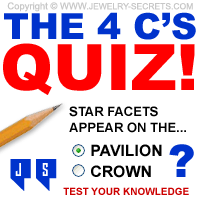
Think you know the 4 C’s?
Think you understand all about the Grades and Ranges? Want to Test that Knowledge?
This Quiz is all about the 4 C’s of Diamonds. If you’ve been reading my Posts and Articles, you’ll know that I talk a lot about the 4 C’s. Have you been paying attention?
Take the Test
Grab a Pencil and some Scrap Paper. There are 50 Questions in all.
Some of the Questions are Multiple-Choice, True and False and a few are Fill-Ins, but they are all Fun! (If you Consider taking a Quiz Fun!)
Write Down your Answers
At the End of the Test you’ll be able to Score yourself and see the Answers and Grades.
BEWARE… Some of these are Tricky!
:) Ready? Let’s begin…
The 4 C’s Diamond Quiz!
Question 1:
Who devised the 4 C’s?
- AGS
- IGI
- GIA
- EGL
Question 2:
What type of Magnification is used to Grade Diamonds?
- 5X
- 10X
- 20X
- 30X
Question 3:
S-Z Color is called what?
- Tinted Color
- Fancy Color
- Faint Yellow
- Light Yellow
Question 4:
What Color Grade is Colorless?
- A
- B
- C
- D
Question 5:
A Flaw on the outside of a Diamond is called what?
- Blemish
- Inclusion
- Crystal
- Feather
Question 6:
Trigons usually show up where?
- Culet
- Naturals
- Crown
- Pavilion
Question 7:
A Fisheye is caused by what?
- A Shallow Stone
- A Stone with Wavy Grainlines
- Dark Inclusions that Resemble a Fish
- A Rough Unpolished Girdle
Question 8:
What Year were the 4C’s devised?
- 1919
- 1962
- 1949
- 1936
Question 9:
The 4 C’s are:
- Color, Clarity, Shape, Size
- Cut, Color, Clarity, Carat Weight
- Clarity, Colorless, Cutting Style, Weight
- Carat Weight, Color, Cost, Clarity
Question 10:
Star Facets appear on the:
- Pavilion
- Table
- Girdle
- Crown
Question 10:
The Culet is what Shape?
_____________
Question 12:
Fancy Cuts are what?
- Diamonds with Fancy Color
- Diamonds with Extra Facets
- Every Cut except the Brilliant Cut
- Trigons with Triangular Patterns
Question 13:
How many Facets are on a Brilliant Cut?
- 50
- 53
- 55
- 58
Question 14:
What is a great indicator as to the Make of a Diamond?
- Girdle Thickness
- Table Shape
- Width of Diamond
- Culet Shape
Question 15:
What is the Ideal Table Percentage?
- 54-59%
- 52-60%
- 50-55%
- 53-57%
Question 16:
What is Scintillation?
- Sparkle Effects
- Fire in a Diamond
- Fluorescence
- After Glow
Question 17:
What gets the title of “Flat-Tire”?
- Girdle
- Culet
- Facets
- Table
Question 18:
What can make a Diamond look like it has a Bullet Hole?
- Cavity
- Pavilion
- Blemish
- Culet
Question 19:
What is Z+ ?
_________________
Question 20:
How many different Color Grades are there?
- 23
- 24
- 25
- 26
Question 21:
What is the lowest Color Range there is?
- D
- G
- S
- Z
Question 22:
The Hope Diamond is what Color?
- White
- Blue
- Green
- Red
Question 23:
Clarity is what?
- Amount of Imperfections in a Diamond
- Amount of Carbon Spots in a Diamond
- Amount of Blemishes in a Diamond
- Amount of Cloudiness in a Diamond
Question 24:
Which one is NOT an Imperfection?
- Naturals
- Cleavage
- Knots
- Warping
Question 25:
What is the #1 Imperfection found in Diamonds?
- Bearded Girdle
- Black Carbon Spots
- Clouds
- Naturals
Question 26:
What Jewelry often has a Bearded Girdle?
- Tension Set Jewelry
- Estate Jewelry
- Cubic Zirconia Jewelry
- Bezel Set Jewelry
Question 27:
Laser Drill Holes are made to what?
- Remove Fluorescence
- Burn out Inclusions
- Remove Inscriptions
- Enhance Facet Lines
Question 28:
Extra Facets usually…
- Get Rid of Unsightly Inclusions
- Round off the Crown
- Add Weight to the Carat Size
- Create the Ideal Cut
Question 29:
What can look like an Inverted Pyramid?
- Culet
- Grain Lines
- Trigons
- Facets
Question 30:
How many Clarity Grades are there?
- 5
- 7
- 9
- 11
Question 31:
I4 Clarity Diamonds are known as Industrial Diamonds?
- TRUE
- FALSE
Question 32:
VVS Stands for:
- Very, Very, Slightly Included
- Very, Very, Small Inclusion
- Very, Very, Slight Internal Flaws
- Very, Very Select Imperfections
Question 33:
What Percentage of Diamonds in Jewelry Stores are I Clarity?
- 20%
- 30%
- 40%
- 50%
Question 34:
Diamond Carat Weights all started with what?
- Carob Seeds
- Facet Size
- Girdle Width
- Specific Gravity
Question 35:
CTW means what?
- Carat to Weight
- Carat Weight
- Carat Total Weight
- Carat Total Whole
Question 36:
What is the best selling Carat Weight sold for Engagement Rings?
- .38
- .50
- .75
- 1.00
Question 37:
The 4C’s help what?
- Help locate the Origin of a Diamond
- Help Identify SI3 Clarity Diamonds
- Help Determine the Density of a Diamond
- Help Identify, Classify and Price Diamonds
Question 38:
Diamonds K-Z can have what Colors?
- Yellow & Brown
- Yellow & White
- Yellow & Blue
- Yellow & Colorless
Question 39:
What Color is in the Very Light Yellow Color Range?
- M
- R
- S
- Y
Question 40:
What’s the highest Color Grade any Diamond can get?
__________________
Question 41:
What’s the rarest Diamond Color there is?
- Yellow
- Pink
- Blue
- Green
Question 42:
Champagne Colored Diamonds are what Color?
- Light Yellow
- Light Brown
- Light Orange
- Light Peach
Question 43:
Most Mineral Crystals found in Diamonds are what?
- Abrasions
- Garnet Crystals
- Diamond Crystals
- Grain Lines
Question 44:
What is the DNA of Diamonds?
- Graphite
- Sulphur
- Corundum
- Carbon
Question 45:
The initials GIA stand for?
- Gemological Institute of America
- Gem Lab Association
- Gemstone Identification Association
- Gemstone Institute Association
Question 46:
What can look like Jagged Mountains on a Diamond?
- An Uneven Girdle
- A Rough Cavity Spot
- Star Facets
- Pavilion Facets
Question 47:
Most Diamonds are found to have what Color?
- Yellow
- White
- Brown
- Gray
Question 48:
How many Points are in a One Carat Diamond?
_______________
Question 49:
Trilliant Cuts are what Shape?
- Triangle
- Trapezoid
- Pentagon
- Octagon
Question 50:
What takes up the most amount of Information on a Diamond Report?
- Clarity
- Color
- Carat Weight
- Cut
51: Extra Credit worth 2 pts
The Ideal Cut usually refers to what Cut?
- Princess Cut
- Brilliant Cut
- Perfect Cut
- Fancy Cut
52: Extra Credit worth 2 pts
Table Percentage is arrived at by comparing it to what?
- Thickness of the Girdle
- Depth of the Diamond
- Width of the Diamond
- Height of the Crown
ALL FINISHED!
There you have it. 52 ways to say I Love the 4 C’s!
How do you think you Scored?
Check your Answers
1) C – G.I.A. – The G.I.A. wrote and devised the 4 C’s!
2) B – 10x – 10 Powered Magnification is what is used to Grade Diamonds with!
3) D – Light Yellow – Light Yellow is the lowest Color Range there is before Fancy Colors!
4) D – D Color is Colorless (No Color) – There is no A B or C Color!
5) A – Blemish – All the others are known as Internal Inclusions!
6) B – Naturals – Naturals often appear around the Girdle and Trigons show up there!
7) A – A Shallow Stone – Because light passes right through a Shallow Stone it often makes it look like a dark circle or a “Fish Eye”!
8) C – 1949 – That’s the year that the 4 C’s were born!
9) B – Cut, Color, Clarity, Carat Weight!
10) D – Crown – Star Facets appear on the Crown (right around the Table Facet)!
11) Octagon!
12) C – Every Cut except the Brilliant – Fancy Cuts are like the Marquise, Princess, Pear, Trillion, Radiant, Emerald, Baguette and Heart Shapes!
13) D – 58 Facets are on a Brilliant Cut Diamond. (57 if there is no Culet!)
14) B – Table Shape – If the Table is Warped, Uneven, or not Straight, the Make is probably off!
15) D – 53-57% is the Percentage of an Ideal Cut Table!
16) A – Sparkle Effects – All those wonderful bursts of Sparkles is called Scintillation! Fluorescence is where it Glows-In-The-Dark!
17) A – The Girdle – When the Girdle is Cut Uneven and is thicker on one side than the other, it’s a “Flat Tire”!
18) D – Culet – If the Culet is large it can look like a Bullet Hole in your Diamond!
19) Fancy Color – Anything beyond Z (Z+) is considered a Fancy Color.
20) B – 24 Different Color Grades: D, E, F, G, H, I, J, K, L, M, N, O, P, Q, R, S, T, U, V, W, X, Y, Z, and Z+
21) D – Z – Z is the lowest Color Range there is. (Z+ is NOT considered a Low Color, but a Fancy Color!)
22) B – Blue – The Hope Diamond (in the Smithsonian Institute) is a Blue Colored Fancy Diamond.
23) A – Amount of Imperfections in a Diamond!
24) D – Warping – Warping is not an Imperfection! All the rest are!
25) B – Black Carbon Spots – The #1 Inclusion is Carbon that never Crystallized properly.
26) B – Estate Jewelry – Estate Jewelry and Antiques often get the Bearded Girdle (Little, Fine Chips around the Girdle’s Edge!)
27) B – Burn out Inclusions – Lasers burn out Inclusions to make the Diamond look better!
28) A – Get rid of Unsightly Inclusions. If Inclusions fall right on the edge of the Girdle, Diamond Cutters will often cut them out.
29) C – Trigons – Little, Inverted Triangular Growth Patterns all stacked together that often look like a Pyramid!
30) D – 11 Clarity Grades – They are: FL, IF, VVS1, VVS2, VS1, VS2, SI1, SI2, I1, I2 and I3.
31) B – False – There is no such thing as I4 Clarity. But anything below an I3 are considered Industrial Diamonds!
32) A – Very, Very Slightly Included – All the rest are just to fool ya!
33) D – 50% – Hard to believe, but half the Diamonds you see in stores are I Clarity!
34) A – Carob Seeds – These little Seeds from the Carob Tree were used to Weigh Diamonds before the Diamond Scale was invented!
35) C – Carat Total Weight – (Meaning all the Carat Weight Combined) CT means Carat Weight! Read: Understanding Carat Weights!
36) A – .38 – Slightly over a 1/3 of a Carat is average!
37) D – Help Identify, Classify and Price Diamonds – The 4 C’s won’t help you with Origin, Density or SI3’s (G.I.A. doesn’t recognize SI3’s).
38) A – Yellow & Brown – Anything below K in Color can either be Yellow, Brown or even Gray in hue.
39) B – R – R is the only Color listed that is in the Light Yellow Color Range!
40) D – D Color is the highest Color Grade you can get in the World!
41) B – Pink – Pink Fancy Colored Diamonds are the rarest!
42) B – Light Brown – Light Browns are Champagne Diamonds, Dark Browns are Chocolate Diamonds!
43) C – Diamond Crystals – Most Inclusions found in a Diamond are made up of Diamond Crystals that didn’t crystallize like the rest of the stone.
44) D – Carbon – 100% Pure Carbon is what a Diamond is made of.
45) A – Gemological Institute of America!
46) B – A Rough Cavity Spot – These Rough Cavities often look like Raised, Jagged Mountains!
47) A – Yellow – Almost all the Diamonds mined from the Earth have some sort of Yellow Hue to them!
48) 100 Points! – 1.00 = 100 Points = 1 Carat!
49) A – Triangle – Trilliants or Trillions are Triangular Shaped Diamonds.
50) D – Cut – Cut takes up 10 lines of Information on the Diamond Reports. Clarity, Color and Carat Weight just take up just 1 each.
51) B – Brilliant Cut – Every time you hear about Ideal Cuts it’s usually referring to the Brilliant Cut Diamond!
52) C – Width of the Diamond – Table Percentages are measured against the widest part of the Diamond.
So how did you do?
Total up your Points and Grade yourself!
0-10 Correct
4 C’s Novice – Wow! Not Good!!! I would go back and either reread the Questions or reread the blogs… All the information is here!
11-20 Correct
4 C’s Rookie – Not Bad, Not Good, you still need a lot of work. Keep at it and you’ll pick up the 4 C’s eventually!
21-30 Correct
4 C’s Scholar – Not too bad! Respectable! It seems like you’ve been doing your homework and studying. Now you just need to keep it up and study more!
31-40 Correct
4 C’s Specialist – Sweet! Impressive! You are getting a pretty good grasp of Diamonds, The 4 C’s, Color, Clarity, Cut and Carat Weight! Not bad at all!
41-50 Correct
4 C’s Master – Excellent! I think you have it! You understand what Quality is all about! You seem to understand the concepts that makes up a Great Diamond! Well Done!
51-54 Correct
4 C’s Diamontologist – Congratulations! Perfect Score! I think you’re a true Pro in the Jewelry Industry. You are a master when it comes to Diamonds and the 4 C’s! :)
If you liked this Quiz, take The Gemstone Quiz and our Diamond Quiz!
If you have any Comments about this 4 C’s Quiz, email me!
CHEERS! :)


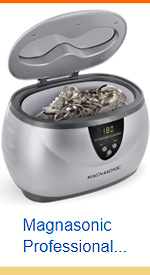

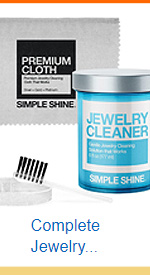
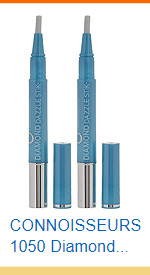
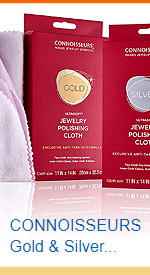
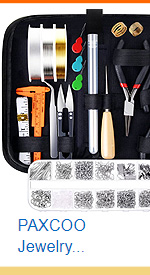
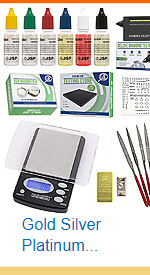
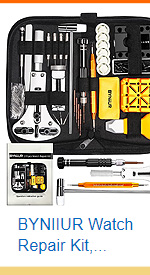
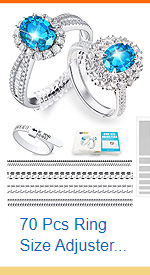
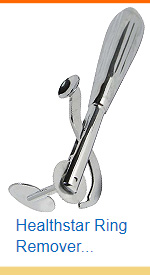
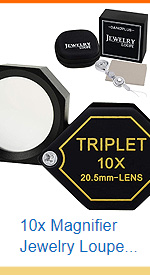
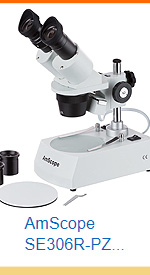




Leave a comment